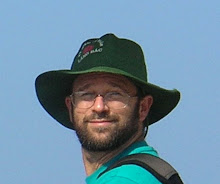Breakfast on my balcony: stoglifitelle - a flaky pastry stuffed with sweet ricotta cheese
In order to avoid the crowds today, I decided to explore to hilltop parks. The first was Janiculum Hill in Trastevere.
View from Janiculum ParkFontana dell'Acqua Paola
The Fontana dell'Acqua Paola, also known as Il Fontanone ("The big fountain") or Mostra dell'Acqua Paola, is a monumental fountain located on the Janiculum Hill, near the church of San Pietro in Montorio, in Rome, Italy. It was built in 1612 to mark the end of the Acqua Paola aqueduct, restored by Pope Paul V, and took its name from him. It was the first major fountain on the right bank of the River Tiber.
San Pietro in Montorio (Saint Peter on the Golden Mountain) Church
The Church of San Pietro in Montorio was built on the site of an earlier 9th-century church dedicated to Saint Peter on Rome's Janiculum hill. It serves as a shrine, marking the supposed site of St. Peter's crucifixion. The church was consecrated in 1500 by Pope Alexander VI.The route from Janiculum Hill to Monte Mario Nature Reserve goes right by the Vatican. To avoid the hordes, I took the long route around, west of the Vatican, along the edge of the city on Via Aurelia Antica. I can’t believe how fortuitous that decision was! For the next two miles I walked along a tree-lined park, scattered with ancient ruins.
The next part of the walk was not so nice, as I ended up on a small road with no shoulder for about a half mile. Then I skirted the edge of the city along the green belt and small suburban streets to the hill where Monte Mario was located. The walk took 6.5 miles from Janiculum hill, instead of the Google Maps route of 3.2 miles. The view from Monte Mario was spectacular upon the Vatican and the city below.
These two parks are located atop two of the seven hills of Rome. Monte Mario is at the highest of the Roman hills. I am reading SPQR by Mary Beard, about the history of Rome. SPQR stands for Senate Populus Que Romanus (The Senate and the Roman People). You can see this abbreviation everywhere, on every manhole cover.
Mary Beard points out that there are more than seven hills in Rome, but the term “The Seven Hills of Rome” stands, an example of the process of recording history, especially ancient history, how fact and fiction get blurred. She goes on to question what is really fact, for much of what we think is true is just speculation or interpretation as historians try to piece together the puzzle. Or, it is just plain old bias, as history is recorded by the victors, and then quoted by other historians. She poses an important question: does the history of a place influence the behavior of future citizens, or is it the writers of history, looking for ways to justify their behavior, are selective about the facts they record?
And don’t we do this with our own personal histories, creating constructs of who we think we are, or like to think we are, or choose to believe we are, by the selectivity of events we chose to emphasize in our own minds.

























The trip so far sounds incredible Robert. Love the pictures and stories behind them. Your walking miles on the trip are impressive too!!! Thanks for sharing the journey. Yes, the MGM sign was a fun experience. You are one of only a couple of others that came up there with us.
ReplyDeleteIf we did anything like that today we’d be shot as snipers 😳.
Glad you are out in the world feeding your soul.
Sending love,
Scoot